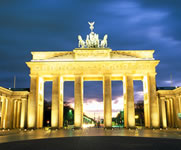Other highlights
Contact
Hechingen Town Council Tourism Office
Kirchplatz 12
72379 Hechingen
Email:
[email protected]
Internet:
www.hechingen.de
Kirchplatz 12
72379 Hechingen
Email:
[email protected]
Internet:
www.hechingen.de
Places of interest
The former royal seat of Hechingen is steeped in history. On a walk through the town situated at the foot of Hohenzollern Castle you will come across many royal buildings and important churches. The collegiate church of St. James, built in the style of late baroque classicism (Zopfstil), and the Renaissance church of St. Luzen are particularly worth seeing. Villa Eugenia was originally built as a neo-classical summer house. In the nearby town of Haigerloch there is a delightful rococo palace church with a beautiful Renaissance altar. Villa Eugenia
This neo-classical domed building crowned with vases was originally constructed as a summer house in 1786 by Prince Joseph Wilhelm (1750-1798). The villa, located in the royal gardens, was extended from 1833 to 1834 for crown prince Friedrich Wilhelm Konstantin and princess Eugenie von Leuchtenberg-de Beauharnais by adding side wings. Villa Eugenia was at the centre of a lively court life during their reign and in subsequent years. Abbey church of St. Luzen
St. Luzen was the parish church in Hechingen until 1535. Between 1586 and 1589 Count Eitelfriedrich I of Hohenzollern-Hechingen had it expanded into one of the most important Renaissance churches in southern Germany. Today it is one of Germany's foremost art historical treasures. In front of the church, stations of the Cross lead to the Calvary with sculptures by Johann Georg Weckenmann (1755). Rococo palace church, Haigerloch
This palace church located in the little picturesque town of Haigerloch has a wonderful Renaissance altar and ceiling fresco by Meinrad von Ow. The royal couple Christoph and Katharina von Hohenzollern had it built in around 1600. The German physicists Bothe, Heisenberg, Weizsäcker and Wirtz spent the last months of the Second World War in the rock cellar beneath the church trying to generate energy from nuclear fission. Today the cellar houses an Atomic Museum.
This neo-classical domed building crowned with vases was originally constructed as a summer house in 1786 by Prince Joseph Wilhelm (1750-1798). The villa, located in the royal gardens, was extended from 1833 to 1834 for crown prince Friedrich Wilhelm Konstantin and princess Eugenie von Leuchtenberg-de Beauharnais by adding side wings. Villa Eugenia was at the centre of a lively court life during their reign and in subsequent years.
St. Luzen was the parish church in Hechingen until 1535. Between 1586 and 1589 Count Eitelfriedrich I of Hohenzollern-Hechingen had it expanded into one of the most important Renaissance churches in southern Germany. Today it is one of Germany's foremost art historical treasures. In front of the church, stations of the Cross lead to the Calvary with sculptures by Johann Georg Weckenmann (1755).
This palace church located in the little picturesque town of Haigerloch has a wonderful Renaissance altar and ceiling fresco by Meinrad von Ow. The royal couple Christoph and Katharina von Hohenzollern had it built in around 1600. The German physicists Bothe, Heisenberg, Weizsäcker and Wirtz spent the last months of the Second World War in the rock cellar beneath the church trying to generate energy from nuclear fission. Today the cellar houses an Atomic Museum.
Travel Planner
Select an option...



